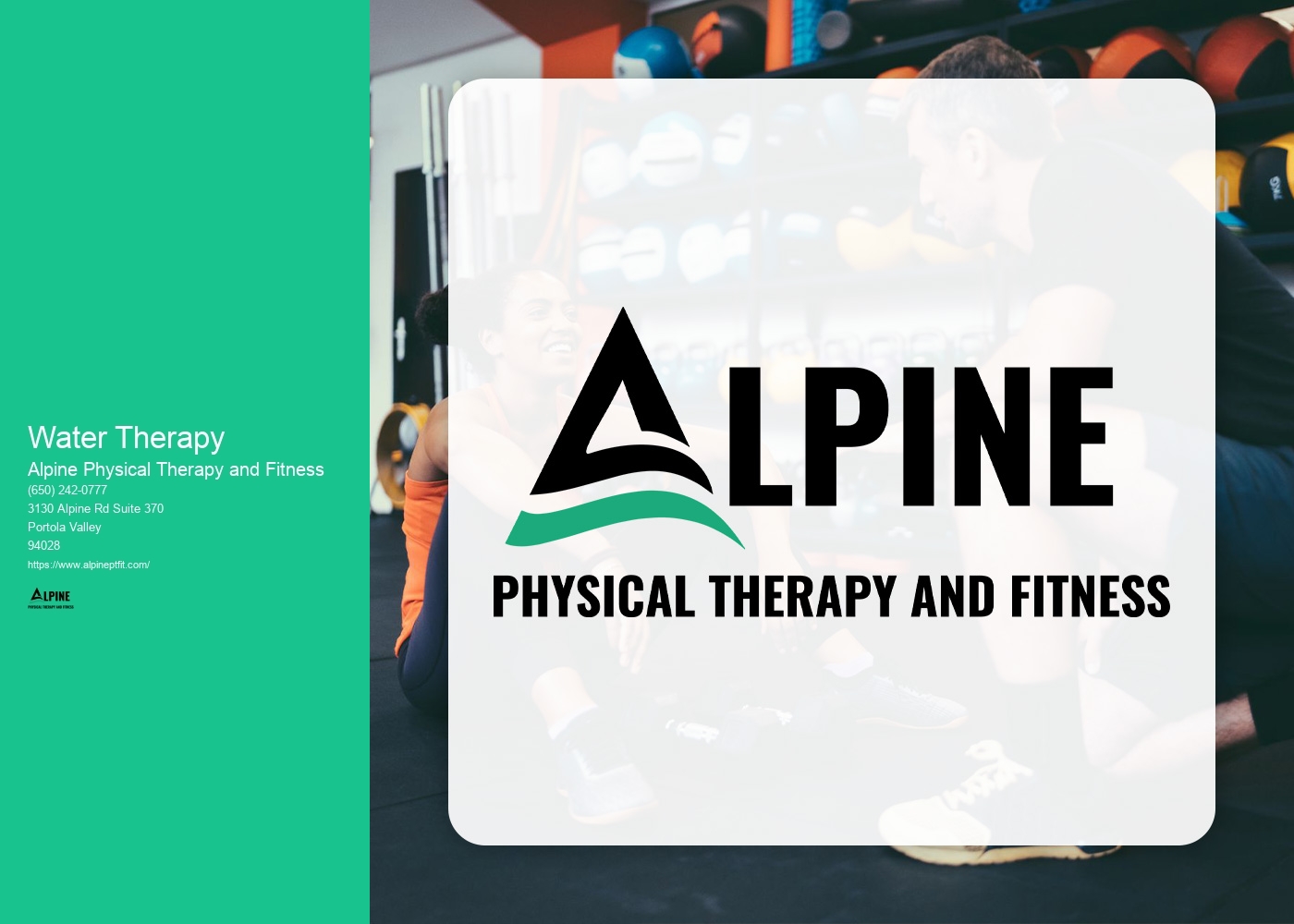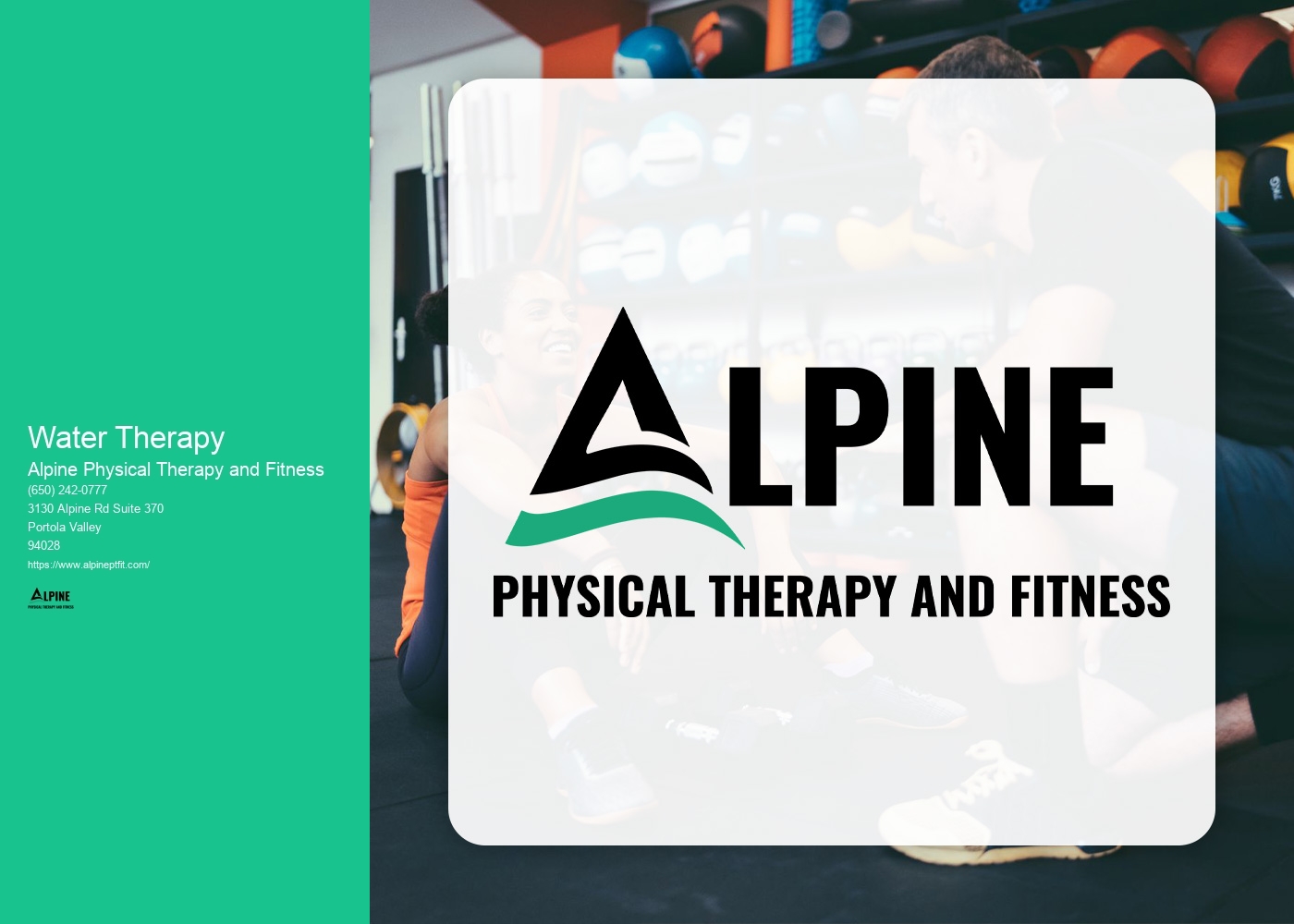

Water therapy, also known as aquatic therapy or hydrotherapy, is a form of physical therapy that takes place in a pool or other water-based environment. It involves the use of water to facilitate movement, exercise, and rehabilitation. The buoyancy of water reduces the impact on joints and muscles, making it easier for individuals to move and exercise. Additionally, the resistance of water provides a gentle form of resistance training, helping to strengthen muscles and improve overall physical function. Water therapy can be used to treat a wide range of conditions, including musculoskeletal injuries, neurological disorders, and chronic pain.
One of the main benefits of water therapy for physical rehabilitation is its ability to provide a low-impact environment for exercise. The buoyancy of water reduces the stress on joints and muscles, making it easier for individuals to move and exercise without exacerbating their injuries or conditions. This can be particularly beneficial for individuals recovering from surgery, those with arthritis or joint pain, and individuals with limited mobility. Water therapy can help improve range of motion, flexibility, and strength, while also reducing pain and inflammation.
Water therapy can indeed help with chronic pain management. The warm water used in water therapy can help to relax muscles and relieve tension, which can be particularly beneficial for individuals with chronic pain conditions such as fibromyalgia or arthritis. The buoyancy of water also helps to support the body, reducing the pressure on joints and providing a gentle form of exercise that can help to alleviate pain. Additionally, the hydrostatic pressure of water can help to reduce swelling and inflammation, further contributing to pain relief.

Water therapy is particularly effective for a variety of conditions and injuries. It is commonly used for musculoskeletal injuries such as sprains, strains, and fractures, as well as for post-surgical rehabilitation. Water therapy can also be beneficial for individuals with neurological conditions such as stroke, multiple sclerosis, or Parkinson's disease, as it can help improve balance, coordination, and muscle control. Additionally, water therapy can be used for individuals with chronic conditions such as fibromyalgia, arthritis, or chronic pain, as it provides a gentle and supportive environment for exercise and movement.
The duration of a typical water therapy session can vary depending on the individual's needs and goals. Generally, a session may last anywhere from 30 minutes to an hour. The specific exercises and activities performed during the session will be tailored to the individual's condition and goals, and may include stretching, strengthening exercises, balance training, and cardiovascular exercises. The therapist will work closely with the individual to develop a personalized treatment plan and determine the appropriate duration for each session.

Water therapy is suitable for individuals of all ages and fitness levels. It can be adapted to meet the needs of children, adults, and seniors, as well as individuals with varying levels of physical fitness. The buoyancy of water makes it easier for individuals with limited mobility or strength to move and exercise, while also providing a challenging environment for individuals who are more physically fit. The therapist will assess the individual's abilities and goals and tailor the water therapy program accordingly, ensuring that it is safe and effective for each individual.
While water therapy is generally safe and well-tolerated, there are some precautions and contraindications to be aware of. Individuals with open wounds, infections, or contagious diseases should not participate in water therapy until they have fully healed or recovered. Individuals with certain medical conditions, such as uncontrolled high blood pressure, heart disease, or respiratory problems, should consult with their healthcare provider before starting water therapy. Additionally, individuals who are unable to swim or have a fear of water may not be suitable candidates for water therapy. It is important to discuss any concerns or medical conditions with the therapist before starting water therapy to ensure safety and effectiveness.

Joint mobilization and joint manipulation are both techniques used in manual therapy to improve joint function and reduce pain. However, they differ in their approach and level of force applied. Joint mobilization involves the therapist gently moving the joint through its range of motion, using techniques such as oscillation, traction, and gliding. This helps to improve joint mobility, increase blood flow, and reduce muscle tension. On the other hand, joint manipulation involves a high-velocity, low-amplitude thrust to the joint, often resulting in an audible "pop" or "crack". This technique is used to restore joint alignment, release joint restrictions, and improve joint function. While both techniques can be effective in treating joint dysfunction, joint manipulation is generally more forceful and may be used for more severe or chronic conditions.
Yes, there are specialized therapies available for individuals with Alzheimer's disease. These therapies aim to improve cognitive function, manage behavioral symptoms, and enhance overall quality of life for individuals with Alzheimer's. Some of the specialized therapies include cognitive stimulation therapy, reminiscence therapy, reality orientation therapy, and music therapy. Cognitive stimulation therapy involves engaging individuals in activities that stimulate their cognitive abilities, such as puzzles, memory games, and discussions. Reminiscence therapy focuses on using past memories and experiences to improve mood and well-being. Reality orientation therapy helps individuals with Alzheimer's to maintain a sense of time, place, and person by providing them with cues and reminders. Music therapy involves using music to stimulate memories, reduce anxiety, and improve mood. These specialized therapies can be tailored to meet the unique needs and abilities of individuals with Alzheimer's, and they can be provided in various settings, including home, community centers, and long-term care facilities.
Physical therapists play a crucial role in addressing pelvic organ prolapse by utilizing a comprehensive and individualized treatment approach. They employ a variety of techniques and interventions to help alleviate symptoms and improve pelvic floor muscle function. These may include pelvic floor muscle exercises, also known as Kegel exercises, which aim to strengthen and tone the muscles supporting the pelvic organs. Additionally, therapists may incorporate biofeedback, electrical stimulation, and manual therapy techniques to enhance muscle coordination and improve pelvic floor muscle strength. Education on proper body mechanics and postural alignment is also provided to promote optimal pelvic organ support. Furthermore, physical therapists may collaborate with other healthcare professionals, such as gynecologists and urologists, to ensure a multidisciplinary approach to managing pelvic organ prolapse. By addressing the underlying causes and providing targeted interventions, physical therapists help individuals with pelvic organ prolapse regain function, reduce symptoms, and improve their overall quality of life.
Physical therapy plays a crucial role in managing hypertension by incorporating exercise and lifestyle modifications into the treatment plan. Physical therapists use a combination of aerobic exercises, resistance training, and flexibility exercises to help lower blood pressure levels. These exercises help improve cardiovascular fitness, reduce arterial stiffness, and enhance blood vessel function. Additionally, physical therapists educate patients on the importance of regular physical activity, healthy eating habits, stress management techniques, and smoking cessation to further control hypertension. By addressing these lifestyle factors, physical therapy can effectively contribute to the overall management of hypertension and improve the patient's quality of life.
Physical therapy plays a crucial role in addressing overuse injuries in runners by employing a comprehensive approach that focuses on reducing pain, promoting healing, and preventing future injuries. Physical therapists utilize a variety of techniques and modalities such as manual therapy, therapeutic exercises, stretching, and strengthening exercises to target the specific muscles and tissues affected by the overuse injury. They also provide education on proper running form, footwear selection, and training modifications to prevent further strain on the injured area. Additionally, physical therapists may incorporate other interventions like ultrasound, electrical stimulation, and heat or cold therapy to further enhance the healing process. By tailoring the treatment plan to the individual runner's needs and goals, physical therapy helps runners recover from overuse injuries and return to their sport safely and efficiently.
Physical therapy plays a crucial role in addressing toe-walking in children. Toe-walking refers to a gait pattern where a child walks on their toes instead of using their entire foot. Physical therapists use a variety of techniques and interventions to address this issue. They may focus on improving muscle strength and flexibility in the lower legs and feet through exercises and stretches. They may also work on improving balance and coordination to help the child transition to a more typical heel-to-toe walking pattern. Additionally, physical therapists may use orthotic devices, such as ankle-foot orthoses, to provide support and encourage proper foot alignment. By addressing the underlying factors contributing to toe-walking, physical therapy can help children develop a more functional and efficient walking pattern.